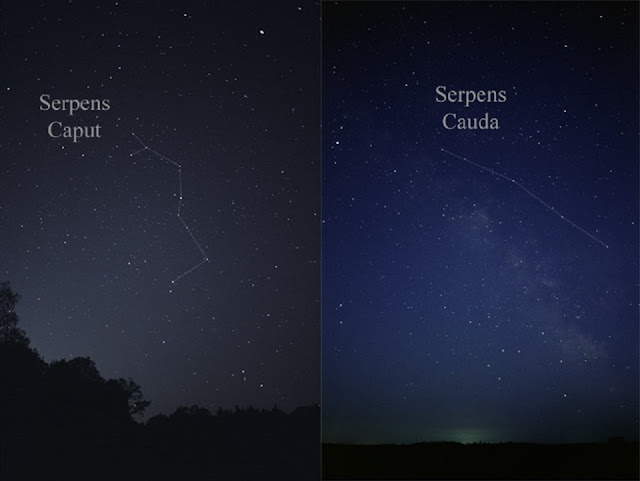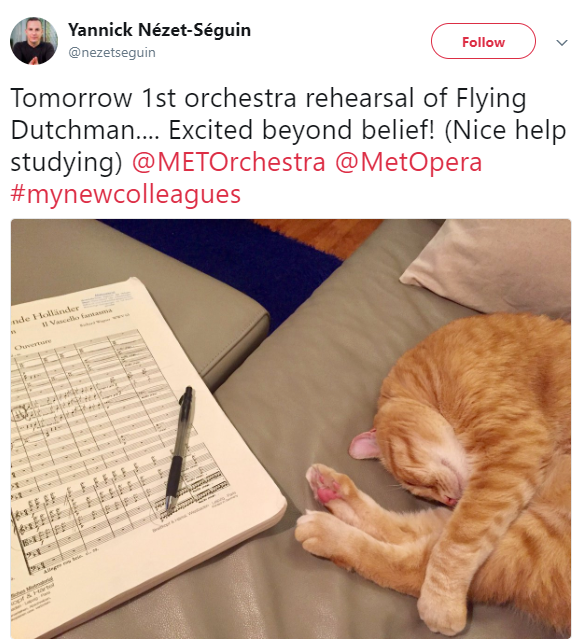Summary: Urban root management defends six species-specific root types in three climate-specific root systems against infrastructural intrusions into small spaces.
 |
| Urban root management looks for symptoms of stressed roots, such as buttressing; buttress root injury to Wye Oak, largest white oak in the United States, toppled during thunderstorm June 6, 2002; Wye Mills, Talbot County, Eastern Shore of Maryland: Randy Cyr/Greentree/Bugwood.org, CC BY 3.0, via Forestry Images |
The article Root Management: An Introduction for the April 2017 issue of Arborist News assigns at least one non-structural or structural kind of root to all the world's conifers, hardwoods and palms.
Conifers and hardwoods as dicots and palm trees as monocots bear roots to absorb minerals and water, anchor and support trees, produce hormones and store carbohydrates. Urban root management considers interactions with infrastructure, plants, property and soil, site usage and tree health, longevity and stability in compacted space and infrastructural conflict contexts. Tree health and mature size depend upon root space size and soil quality whereas root type number and size display variability by soil conditions and species.
Urban trees rarely entertain tap roots, first seed-released root, first axis for other roots, seedling stage's deep mineral- and water-absorbing, dominant, gravitropic (vertically oriented), tapering root.
Absorbent, anchoring, horizontal, near-surface, ropelike, untapered lateral roots fit between fine terminal roots and, below damage-prone root collars or trunk flares, the trunk's rapid taper zone.
Wind loading generates buttress roots, or lateral roots with buttressing, as wood tissue on upper unions between laterals and trunks whose bases grapple with mechanical stress. Anchoring, branching, diagonally downward-growing, mineral- and water-uptaking heart or oblique roots at below-ground trunk bases, between lateral and tap roots, have smaller diameters than tap roots. Urban root management identifies drip lines from trunks to outermost branch tips as below-ground occurrences of absorbent, anchoring sinker roots inclining vertically downward from lateral roots.
Continually replaced, multi-branching, near-surface, omnidirectional, relatively short-lived fine roots 0.002 to 0.07 inches (0.05 to 1.78 millimeters) in diameter juggle origins from all other root types.
Fine roots keep tree crowns and root systems balanced and, with symbiotic fungal colonies of mycorrhizae, fungal pathogen threats lower and mineral and water uptake higher. They lack the group status of adventitious, lateral, oblique, sinker and tap roots as structural roots that lend anchorage or support to the tree canopy crown.
Lower trunks in contact with moist soil or organic matter, palm trees, secondary tissue of older roots and vegetatively propagated tree cuttings muster adventitious true roots. Their mineral and water absorption and their structural support after fine, lateral, oblique, sinker losses from injury, pruning or soil environment changes nurture mature tree health.
Urban root management obtains lateral and heart, or tap, root systems respectively more and less frequently on species native to semitropical, temperate and tropical climate zones.
Heart or oblique root systems predominate on woody species native to arid, Mediterranean and semi-arid climate zones while tap root systems with laterals prove least common.
Soil environment qualifies as the greatest determinant of root system depth and spread, with a deep, uniform soil-dwelling, heart root system-tending species oblique-rooting in shallow soils. Its compacted, hardpan, subsurface clay, decreased oxygen diffusion, high water tables and increased bulk density result in asymmetrical, non-uniform horizontal and vertical root development and spread. Its upper foot (30.48 centimeters) around palm tree trunk root initiation zones sustains adventitious roots that support no secondary growth for annual rings or increased diameters.
Urban root management tracks impacts of compacted spaces and intrusive infrastructures upon species-specific root systems, according to co-authors Larry Costello, E. Thomas Smiley and Gary Watson.
 |
| Urban root management considers soil environment, including presence of compaction, as most critical determinant of tree root system's depth and spread; compacted soil and high pH in parking lot island account for nutrient deficiency's effect on below-ground roots; Virginia Tech campus, Blacksburg, southwestern Virginia: Mary Ann Hansen/Virginia Polytechnic Institute and State University/Bugwood.org, CC BY 3.0, via Forestry Images |
Acknowledgment
My special thanks to:
talented artists and photographers/concerned organizations who make their fine images available on the internet;
University of Illinois at Urbana-Champaign for superior on-campus and on-line resources.
Image credits:
buttress root injury to Wye Oak, largest white oak in the United States, toppled during thunderstorm June 6, 2002; Wye Mills, Talbot County, Eastern Shore of Maryland: Randy Cyr/Greentree/Bugwood.org, CC BY 3.0, via Forestry Images @ https://www.forestryimages.org/browse/detail.cfm?imgnum=1238350
Urban root management considers soil environment, including presence of compaction, as most critical determinant of tree root system's depth and spread; compacted soil and high pH in parking lot island account for nutrient deficiency's effect on below-ground roots: Mary Ann Hansen/Virginia Polytechnic Institute and State University/Bugwood.org, CC BY 3.0, via Forestry Images @ https://www.forestryimages.org/browse/detail.cfm?imgnum=5334097
For further information:
Costello, Larry; Watson, Gary; and Smiley, E. Thomas. April 2017. "Root Management: An Introduction." Arborist News 2(2): 12-18.
Gilman, Ed. 2011. An Illustrated Guide to Pruning. Third Edition. Boston MA: Cengage.
Hayes, Ed. 2001. Evaluating Tree Defects. Revised, Special Edition. Rochester MN: Safe Trees.
Marriner, Derdriu. 12 March 2017. “Flexural Elasticity Modulus: Trees and Watersprouts Bend or Break.” Earth and Space News. Sunday.
Available @ https://earth-and-space-news.blogspot.com/2017/03/flexural-elasticity-modulus-trees-and.html
Marriner, Derdriu. 18 February 2017. “Plant Health Care Diagnostics When Plants and Places Wrong One Another.” Earth and Space News. Saturday.
Available @ https://earth-and-space-news.blogspot.com/2017/02/plant-health-care-diagnostics-when.html
Marriner, Derdriu. 14 January 2017. “Tree Fertilization for Fine Root Growth and Whole Root System Effects.” Earth and Space News. Saturday.
Available @ https://earth-and-space-news.blogspot.com/2017/01/tree-fertilization-for-fine-root-growth.html
Marriner, Derdriu. 17 December 2016. “Abiotic and Biotic Stress in Low Maintenance Tree Health Care Programs.” Earth and Space News. Saturday.
Available @ https://earth-and-space-news.blogspot.com/2016/12/abiotic-and-biotic-stress-in-low.html
Marriner, Derdriu. 19 November 2016. “Organic Amendments to Compacted Degraded Urban Highway Roadsides.” Earth and Space News. Saturday.
Available @ https://earth-and-space-news.blogspot.com/2016/11/organic-amendments-to-compacted.html
Marriner, Derdriu. 15 October 2016. “Tree Protection Zones by Arborists for All Construction Project Phases.” Earth and Space News. Saturday.
Available @ https://earth-and-space-news.blogspot.com/2016/10/tree-protection-zones-by-arborists-for.html
Marriner, Derdriu. 17 September 2016. “Stormwater Runoff Landscaping With Urban Canopy Cover and Groundcover.” Earth and Space News. Saturday.
Available @ https://earth-and-space-news.blogspot.com/2016/09/stormwater-runoff-landscaping-with.html
Marriner, Derdriu. 13 August 2016. “Changing Places: Tree Nutrient Movement Down, Tree Water Movement Up.” Earth and Space News. Saturday.
Available @ https://earth-and-space-news.blogspot.com/2016/08/changing-places-tree-nutrient-movement.html
Marriner, Derdriu. 16 July 2016. “Treated or Untreated Oriental Bittersweet Vine Management Cut-Stumping.” Earth and Space News. Saturday.
Available @ https://earth-and-space-news.blogspot.com/2016/07/treated-or-untreated-oriental.html
Marriner, Derdriu. 18 June 2016. “Tree Injection Site Procedures: Manufacturer's Instructions and Labels.” Earth and Space News. Saturday.
Available @ https://earth-and-space-news.blogspot.com/2016/06/tree-injection-site-procedures.html
Marriner, Derdriu. 22 May 2016. “Electrical Utility Area Temperate Urban Street Trees: Pruned Regrowth.” Earth and Space News. Sunday.
Available @ https://earth-and-space-news.blogspot.com/2016/05/electrical-utility-area-temperate-urban.html
Marriner, Derdriu. 16 April 2016. “Tree Injection Methods: Treatment Option in Integrated Pest Management.” Earth and Space News. Saturday.
Available @ https://earth-and-space-news.blogspot.com/2016/04/tree-injection-methods-treatment-option.html
Marriner, Derdriu. 6 March 2016. “Bare-Rooted Ornamental Urban Transplants: Amendments Against Mortality.” Earth and Space News. Sunday.
Available @ https://earth-and-space-news.blogspot.com/2016/03/bare-rooted-ornamental-urban.html
Marriner, Derdriu. 28 February 2016. “Bark Protective Survival Mechanisms Foil Deprivation, Injury, Invasion.” Earth and Space News. Sunday.
Available @ https://earth-and-space-news.blogspot.com/2016/02/bark-protective-survival-mechanisms.html
Marriner, Derdriu. 23 January 2016. "LITA Model: Linear Index of Tree Appraisal of Large Urban Swedish Trees." Earth and Space News. Saturday.
Available @ https://earth-and-space-news.blogspot.com/2016/01/lita-model-linear-index-of-tree.html
Marriner, Derdriu. 19 December 2015. “Tree Lightning Protection Systems: Site, Soil, Species True Designs.” Earth and Space News. Saturday.
Available @ https://earth-and-space-news.blogspot.com/2015/12/tree-lightning-protection-systems-site.html
Marriner, Derdriu. 24 October 2015. “Tree Lightning Protection Systems Tailored to Sites, Soils, Species.” Earth and Space News. Saturday.
Available @ https://earth-and-space-news.blogspot.com/2015/10/tree-lightning-protection-systems.html
Marriner, Derdriu. 15 August 2015. “Tree Friendly Urban Soil Management: Amend, Fertilize, Mulch, Till!” Earth and Space News. Saturday.
Available @ https://earth-and-space-news.blogspot.com/2015/08/tree-friendly-urban-soil-management.html
Marriner, Derdriu. 13 June 2015. “Tree Friendly Urban Soil Management: Assemble, Assess, Assist, Astound.” Earth and Space News. Saturday.
Available @ https://earth-and-space-news.blogspot.com/2015/06/tree-friendly-urban-soil-management.html
Marriner, Derdriu. 18 April 2015. “Tree Wound Responses: Healthy Wound Closures by Callus and Woundwood.” Earth and Space News. Saturday.
Available @ https://earth-and-space-news.blogspot.com/2015/04/tree-wound-responses-healthy-wound.html
Marriner, Derdriu. 15 February 2015. “Urban Forest Maintenance and Non-Maintenance Costs and Benefits.” Earth and Space News. Sunday.
Available @ https://earth-and-space-news.blogspot.com/2015/02/urban-forest-maintenance-and-non.html
Marriner, Derdriu. 13 December 2014. “Tree Dwelling Symbionts: Dodder, Lichen, Mistletoe, Moss and Woe-Vine.” Earth and Space News. Saturday.
Available @ https://earth-and-space-news.blogspot.com/2014/12/tree-dwelling-symbionts-dodder-lichen.html
Marriner, Derdriu. 18 October 2014. “Tree Cable Installation Systems Lessen Target Impact From Tree Failure.” Earth and Space News. Saturday.
Available @ https://earth-and-space-news.blogspot.com/2014/10/tree-cable-installation-systems-lessen.html
Marriner, Derdriu. 16 August 2014. “Flood Tolerant Trees in Worst-Case Floodplain and Urbanized Scenarios.” Earth and Space News. Saturday.
Available @ https://earth-and-space-news.blogspot.com/2014/08/flood-tolerant-trees-in-worst-case.html
Marriner, Derdriu. 14 June 2014. “Integrated Vegetation Management of Plants in Utility Rights-of-Way.” Earth and Space News. Saturday.
Available @ https://earth-and-space-news.blogspot.com/2014/06/integrated-vegetation-management-of.html
Marriner, Derdriu. 12 April 2014. “Tree Twig Identification: Buds, Bundle Scars, Leaf Drops, Leaf Scars.” Earth and Space News. Saturday.
Available @ https://earth-and-space-news.blogspot.com/2014/04/tree-twig-identification-buds-bundle.html
Marriner, Derdriu. 15 February 2014. “Tree Twig Anatomy: Ecosystem Stress, Growth Rates, Winter Identification.” Earth and Space News. Saturday.
Available @ https://earth-and-space-news.blogspot.com/2014/02/tree-twig-anatomy-ecosystem-stress.html
Marriner, Derdriu. 14 December 2013. “Community and Tree Safety Awareness During Line- and Road-Clearances.” Earth and Space News. Saturday.
Available @ https://earth-and-space-news.blogspot.com/2013/12/community-and-tree-safety-awareness.html
Marriner, Derdriu. 13 October 2013. “Chain-Saw Gear and Tree Work Related Personal Protective Equipment.” Earth and Space News. Sunday.
Available @ https://earth-and-space-news.blogspot.com/2013/10/chain-saw-gear-and-tree-work-related.html
Marriner, Derdriu. 12 October 2013. “Storm Damaged Tree Clearances: Matched Teamwork of People to Equipment.” Earth and Space News. Saturday.
Available @ https://earth-and-space-news.blogspot.com/2013/10/storm-damaged-tree-clearances-matched.html
Marriner, Derdriu. 17 August 2013. “Storm Induced Tree Damage Assessments: Pre-Storm Planned Preparedness.” Earth and Space News. Saturday.
Available @ https://earth-and-space-news.blogspot.com/2013/08/storm-induced-tree-damage-assessments.html
Marriner, Derdriu. 15 June 2013. “Storm Induced Tree Failures From Heavy Tree Weights and Weather Loads.” Earth and Space News. Saturday.
Available @ https://earth-and-space-news.blogspot.com/2013/06/storm-induced-tree-failures-from-heavy.html
Marriner, Derdriu. 13 April 2013. “Urban Tree Root Management Concerns: Defects, Digs, Dirt, Disturbance.” Earth and Space News. Saturday.
Available @ https://earth-and-space-news.blogspot.com/2013/04/urban-tree-root-management-concerns.html
Marriner, Derdriu. 16 February 2013. “Tree Friendly Beneficial Soil Microbes: Inoculations and Occurrences.” Earth and Space News. Saturday.
Available @ https://earth-and-space-news.blogspot.com/2013/02/tree-friendly-beneficial-soil-microbes.html
Marriner, Derdriu. 15 December 2012. “Healthy Urban Tree Root Crown Balances: Soil Properties, Soil Volumes.” Earth and Space News. Saturday.
Available @ https://earth-and-space-news.blogspot.com/2012/12/healthy-urban-tree-root-crown-balances.html
Marriner, Derdriu. 13 October 2012. “Tree Adaptive Growth: Tree Risk Assessment of Tree Failure, Tree Strength.” Earth and Space News. Saturday.
Available @ https://earth-and-space-news.blogspot.com/2012/10/tree-adaptive-growth-tree-risk.html
Marriner, Derdriu. 11 August 2012. “Tree Risk Assessment Mitigation Reports: Tree Removal, Tree Retention?” Earth and Space News. Saturday.
Available @ https://earth-and-space-news.blogspot.com/2012/08/tree-risk-assessment-mitigation-reports.html
Marriner, Derdriu. 16 June 2012. “Internally Stressed, Response Growing, Wind Loaded Tree Strength.” Earth and Space News. Saturday.
Available @ https://earth-and-space-news.blogspot.com/2012/06/internally-stressed-response-growing.html
Marriner, Derdriu. 14 April 2012. “Three Tree Risk Assessment Levels: Limited Visual, Basic and Advanced.” Earth and Space News. Saturday.
Available @ https://earth-and-space-news.blogspot.com/2012/04/three-tree-risk-assessment-levels.html
Marriner, Derdriu. 19 February 2012. “Qualitative Tree Risk Assessment: Risk Ratings for Targets and Trees.” Earth and Space News. Sunday.
Available @ https://earth-and-space-news.blogspot.com/2012/02/qualitative-tree-risk-assessment-risk.html
Marriner, Derdriu. 18 February 2012. “Qualitative Tree Risk Assessment: Falling Trees Impacting Targets.” Earth and Space News. Saturday.
Available @ https://earth-and-space-news.blogspot.com/2012/02/qualitative-tree-risk-assessment.html
Marriner, Derdriu. 10 December 2011. “Tree Risk Assessment: Tree Failures From Defects and From Wind Loads.” Earth and Space News. Saturday.
Available @ https://earth-and-space-news.blogspot.com/2011/12/tree-risk-assessment-tree-failures-from.html
Marriner, Derdriu. 15 October 2011. “Five Tree Felling Plan Steps for Successful Removals and Worker Safety.” Earth and Space News. Saturday.
Available @ https://earth-and-space-news.blogspot.com/2011/10/five-tree-felling-plan-steps-for.html
Marriner, Derdriu. 13 August 2011. “Natives and Non-Natives as Successfully Urbanized Plant Species.” Earth and Space News. Saturday.
Available @ https://earth-and-space-news.blogspot.com/2011/08/natives-and-non-natives-as-successfully.html
Marriner, Derdriu. 11 June 2011. “Tree Ring Patterns for Ecosystem Ages, Dates, Health and Stress.” Earth and Space News. Saturday.
Available @ https://earth-and-space-news.blogspot.com/2011/06/tree-ring-patterns-for-ecosystem-ages.html
Marriner, Derdriu. 9 April 2011. “Benignly Ugly Tree Disorders: Oak Galls, Powdery Mildew, Sooty Mold, Tar Spot.” Earth and Space News. Saturday.
Available @ https://earth-and-space-news.blogspot.com/2011/04/benignly-ugly-tree-disorders-oak-galls.html
Marriner, Derdriu. 12 February 2011. “Tree Load Can Turn Tree Health Into Tree Failure or Tree Fatigue.” Earth and Space News. Saturday.
Available @ https://earth-and-space-news.blogspot.com/2011/02/tree-load-can-turn-tree-health-into.html
Marriner, Derdriu. 11 December 2010. “Tree Electrical Safety Knowledge, Precautions, Risks and Standards.” Earth and Space News. Saturday.
Available @ https://earth-and-space-news.blogspot.com/2010/12/tree-electrical-safety-knowledge.html
















